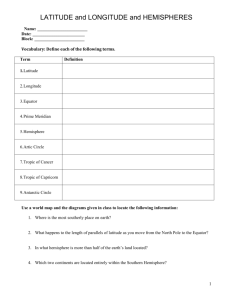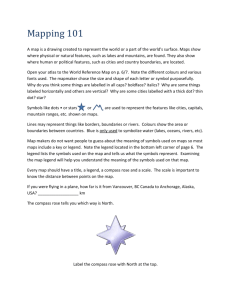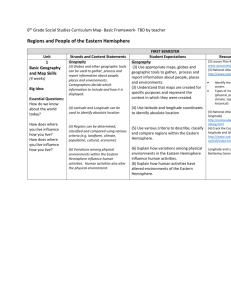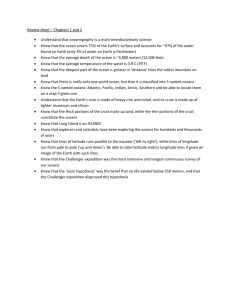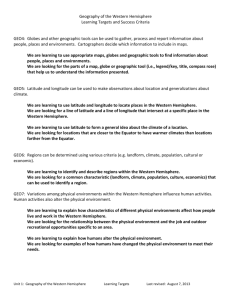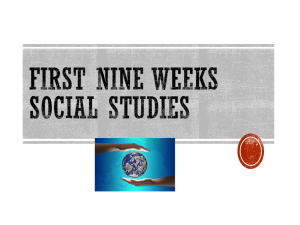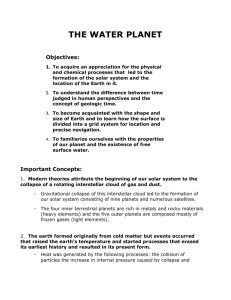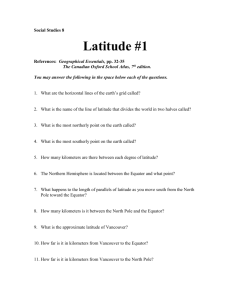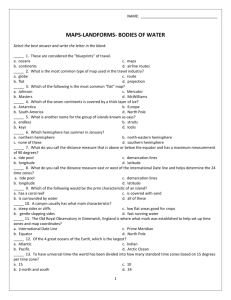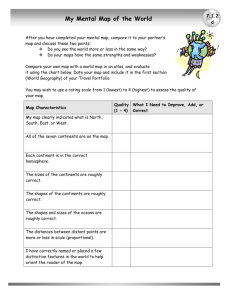Tools of a Geographer - Logan County Schools
advertisement
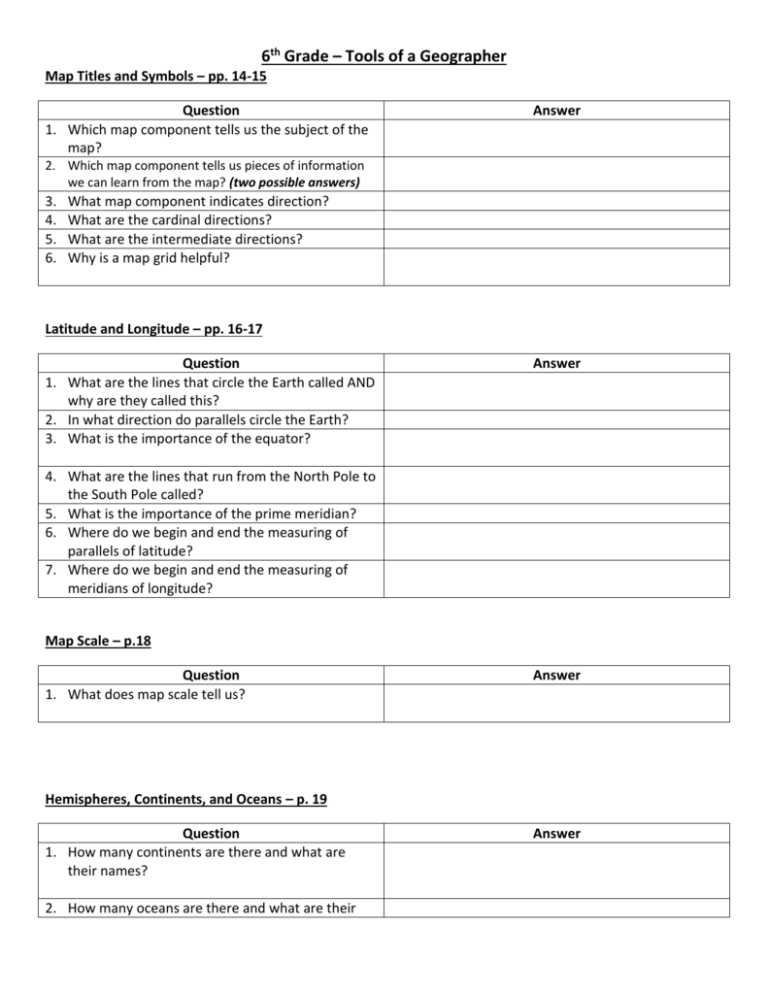
6th Grade – Tools of a Geographer Map Titles and Symbols – pp. 14-15 Question 1. Which map component tells us the subject of the map? Answer 2. Which map component tells us pieces of information we can learn from the map? (two possible answers) 3. 4. 5. 6. What map component indicates direction? What are the cardinal directions? What are the intermediate directions? Why is a map grid helpful? Latitude and Longitude – pp. 16-17 Question 1. What are the lines that circle the Earth called AND why are they called this? 2. In what direction do parallels circle the Earth? 3. What is the importance of the equator? Answer 4. What are the lines that run from the North Pole to the South Pole called? 5. What is the importance of the prime meridian? 6. Where do we begin and end the measuring of parallels of latitude? 7. Where do we begin and end the measuring of meridians of longitude? Map Scale – p.18 Question 1. What does map scale tell us? Answer Hemispheres, Continents, and Oceans – p. 19 Question 1. How many continents are there and what are their names? 2. How many oceans are there and what are their Answer 6th Grade – Tools of a Geographer names? Earth and the Sun – pp. 20-21 Question 1. Why is North America in sunlight only half of the time AND what causes this? Answer 2. How long does it take for the Earth to make one rotation? 3. Besides rotation, how else does the Earth move? 4. How long does it take the Earth to complete one revolution? 5. Why do the sun’s rays NOT shine equally on the northern and southern hemisphere throughout the year? 6. On what date do the sun’s rays shine straight down on the Tropic of Cancer? What is significant about this date in the Northern Hemisphere? 7. What is significant about June 21 and 22 in the Southern Hemisphere? 8. What causes seasons to occur? Understanding Map Projections – pp. 22-23 Question 1. What are challenges of using a globe? 2. What happens when you try to represent the surface of a globe on a flat map? Answer
